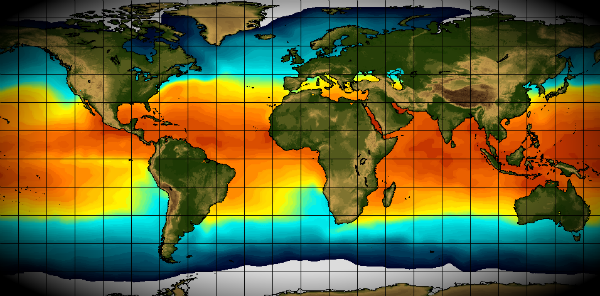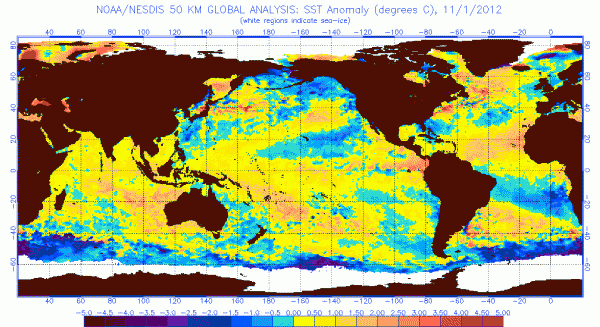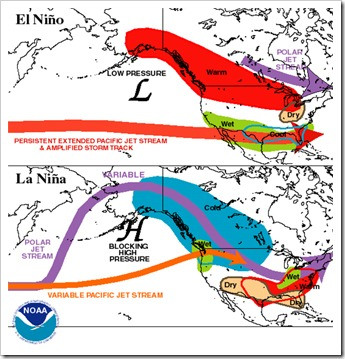Global sea level drop caused by La Nina

A new study shows that the 2011 La Nina was so strong that it caused global mean sea level to drop by 5 millimeters (0.2 inches). This occurred concurrently with the La Nina phase of the El Nino-Southern Oscillation (ENSO) which involves a shift in ocean surface temperatures in the tropical Pacific and changes in precipitation patterns around the world. The change in sea level during the La Nina is due to water mass temporarily shifting from oceans to land as precipitation increased over Australia, northern South America, and Southeast Asia, while it decreased over the oceans.
Satellite data from the GRACE satellites how that since the early 1990s, sea level has been rising by about 3 millimeters (0.1 inches) per year. GRACE measures ocean mass, as well as ocean temperature data from floating sensors and rainfall data. Previous studies have shown that strong El Nino events can increase sea level temporarily. Rising sea level is already affecting coastal populations and most climate models predict that sea level will generally continue to rise as Earth’s climate warms.

El Niño–Southern Oscillation
El Niño/La Niña–Southern Oscillation, is a climate pattern that occurs across the tropical Pacific Ocean roughly every five years. The Southern Oscillation refers to variations in the temperature of the surface of the tropical eastern Pacific Ocean (warming and cooling known as El Niño and La Niña respectively) and in air surface pressure in the tropical western Pacific. The two variations are coupled: the warm oceanic phase, El Niño, accompanies high air surface pressure in the western Pacific, while the cold phase, La Niña, accompanies low air surface pressure in the western Pacific. Mechanisms that cause the oscillation remain under study.
The extremes of this climate pattern’s oscillations, El Niño and La Niña, cause extreme weather (such as floods and droughts) in many regions of the world. Developing countries dependent upon agriculture and fishing, particularly those bordering the Pacific Ocean, are the most affected.

“The 2011 La Nina: So strong, the oceans fell” Geophysical Research Letters, doi:10.1029/2012GL053055, 2012

[…] Source Share this:TwitterFacebookLike this:LikeBe the first to like this. Posted in Climate Change | Tagged climate change, El Nino-Southern Oscillation (ENSO), GRACE satellites, La Nina, rising sea level […]
Global sea level drop caused by La Nina?
That assumes we know the full mechanics involved with El Nino and La Nina. Is this just correlation or causation? Without a full understanding of the mechanism surely a definite answer can not be given.